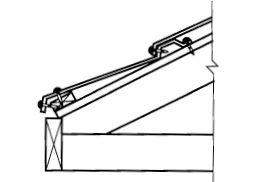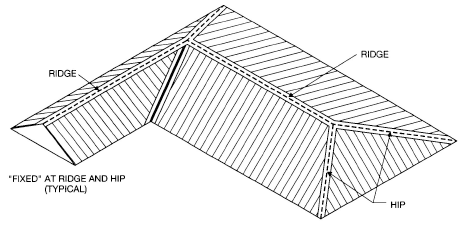Metal roofing products are available in a wide assortment of shapes and textures ranging from the common corrugated steel used in agricultural buildings to tiles and shingles that imitate wood or slate. Almost all metals are used in roofing including copper, terne plate, aluminium and steel. One of the features of metal is that it can be finished in a variety of ways to suit the style of the house. For example, aluminium tiles are available in both natural finish, and baked enamel finishes in several colours and textures. Metal tiles can be plain or embossed with patterns.

Metal tiles come in many sizes, but most are strips approximately 1.2 m (4 ft) long and in widths determined by their headlaps and exposure. Most have interlocking overlaps which conceal the fasteners used to attach them.
Metal shingles can come in different sizes and shapes and are usually fabricated (made) from lightweight aluminium or steel. The shingles interlock together like flat seamed roofing. The shingles may be smooth enamelled, smooth, embossed, or stamped to resemble individual shingles. Shingles are usually about 1.2 m (4 ft) long and are secured to the deck with galvanized nails hidden at the end of the shingle or with clips that are secured to the deck and then the clip hooks into the upper edge of the shingle. Some shingles come in rolls that have interlocking joints and are concealed fastened.
Metal tiles and shingles can be applied directly over solid sheathing or over carefully spaced wooden strips (battens). The key to installing these products is to understand the properties of the metal materials. Due to their differing coefficients of expansion (they get longer and wider when the temperature rises and shrink as it gets colder), movement must be accommodated when they are attached to prevent buckling, pop-out or oil-canning.

Metal shingles and tiles, like other unitized roofing products can be successfully applied by most experienced roofers. Flat sheets, batten metal roofing, and some of the more complex profiled sheet products should probably be left to trained sheet metal workers to install.

